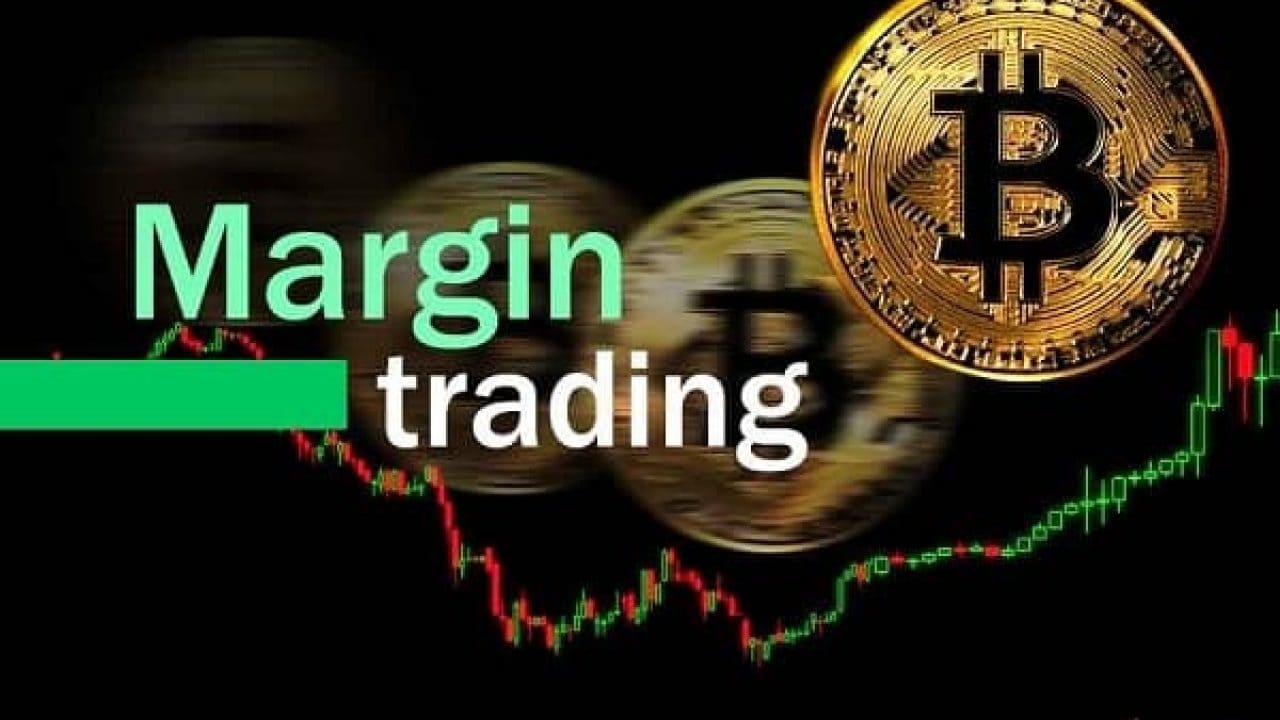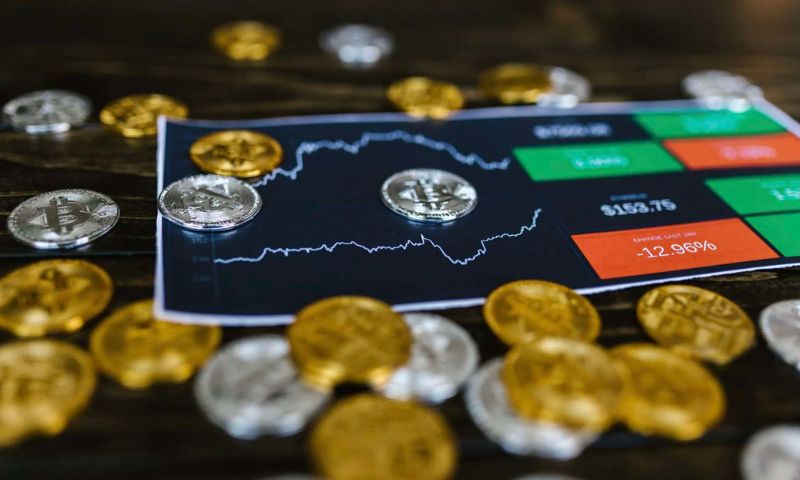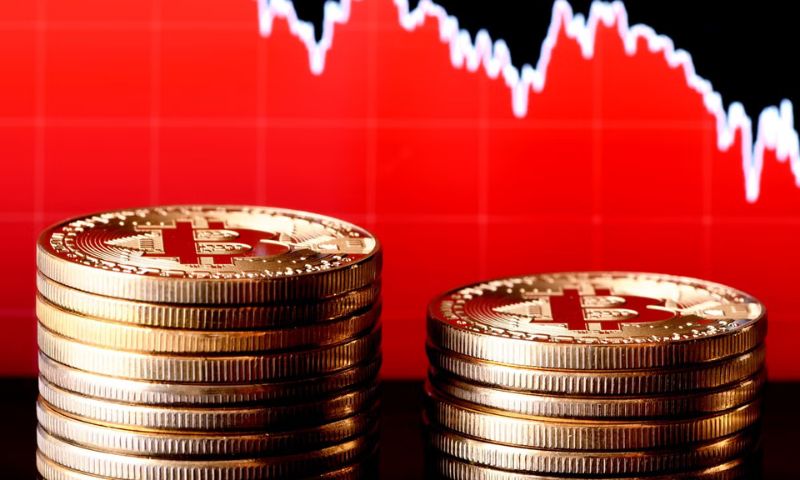As a seasoned trader, I know the pull of margin trading on crypto exchanges—the promise of magnified profits can be alluring. But with big rewards come big risks, and that’s why understanding best practices for margin trading on crypto exchanges is a must. The catch? You need to do it right. Here are the golden rules: start with a solid foundation of knowledge, have iron-clad risk management strategies, make moves based on sharp market analysis, and execute trades with practical wisdom. Get these right, and you equip yourself not just to play the game, but to win it. Ready to amplify your crypto trading game? Let’s dive in.
Building a Solid Foundation: Understanding Margin Trading in Crypto
The Mechanics of Margin Trading Explained
Margin trading lets you borrow money to invest more. Think of it like a loan. You put down some cash, called “initial margin,” and get more money to buy crypto. This can increase your profits. But, it’s risky. If the value drops, you could lose your money faster. It’s like betting more than you have.
Understanding how this works is key. Let’s say you want to buy $1000 worth of Bitcoin, but you’ve only got $500. With margin trading, a crypto exchange lets you borrow the other $500. Now you can buy the full $1000 worth. If Bitcoin’s price goes up, great! Your profit is bigger because you bought more. But if it falls, watch out. Losses can force you to sell, or the exchange might do it for you.
Defining Leverage and Its Impact on Cryptocurrency Positions
Leverage is using borrowed money to invest. It multiplies your buying power. In crypto, leverage is shown as ratios, like 2:1. A 2:1 ratio means for every $1 you have, you can borrow $1 more. So, buying $200 worth of crypto needs just $100 of your own money.
High leverage can lead to big wins. But, if the market turns, you could lose fast. Crypto markets move quick, so high leverage ups the risk. Good traders know this. They pick the right leverage for their goals and how much risk they can take.
Remember, leverage boosts both wins and losses. If you bet $1000 with 2:1 leverage and the price goes up 10%, you make $200 instead of $100. But, if the price drops 10%, you lose $200, not just $100. It’s a double-edged sword.
With great power comes great responsibility. That’s the deal with crypto margin trading. Use it wisely, and it can be a strong tool. But forgetting the risks can lead to a quick exit from the market. Always think before you act and don’t rush your trades.
Understanding margin calls is also crucial. They happen when your account value falls too much, and the exchange asks for more money. If you don’t add funds, your crypto could be sold off. Nobody wants that.
In summary, to do well in margin trading:
- Always know how much you’re borrowing.
- Keep an eye on the leverage you use.
- Stay on top of your trades, as markets can shift fast.
- Understand margin calls to avoid unwanted sell-offs.
This lays the groundwork for your margin trading journey in crypto. Take it slow and easy, and you’ll set yourself up for success.
Risk Management: Navigating the High Seas of Crypto Leverage
Identifying and Counteracting Margin Trading Risks
Margin trading in crypto can be a wild ride. Think of it as sailing in open waters. Without a map and compass, you’re likely to get lost. Risk management is your compass here. To begin managing risks, know the leverage strategies in crypto. Then, learn the margin trading risks. Leverage can boost your gains but can also increase losses.
Understanding crypto leverage means knowing how borrowing money can help you trade more. Let’s say you have $100. With 5x leverage, you can trade as if you had $500. Sounds great, right? But there’s also a downside. If the market turns against you, your losses also multiply.
To stay safe in these high seas, always check the initial margin requirements. This is the amount you need to put down to open a trade. It’s like your first stake in the game. Maintenance margin is next. It’s what keeps your position open. If you fall below this, watch out! You might face a margin call, which is when you must add more funds or close your position.
We can’t forget liquidation either. It’s when your trade is forced to close because your balance can’t cover the losses. Let’s avoid that, shall we? Use margin call avoidance strategies. Keep a close eye on your trades and respond fast if you’re near the maintenance margin.
The Essential Role of Stop-Loss Orders in Preserving Capital
Here’s another life-saver: stop-loss orders. They’re like your safety net, set at a price you choose. If your trade hits this price, it closes automatically. This cuts losses before they grow bigger. Don’t sail without it!
Setting stop-loss orders is easy. Pick a price where you can say, “That’s enough loss for me.” Stick to it. It’s like choosing how deep you’re willing to dive before coming back up for air.
Calculating potential margin profits is fun but always think about the risk/reward ratio in leverage trading. Balance is key. Aim for a fair reward for the risk you take. It’s tempting to go for huge wins, but be smart. Keep that risk in check.
In margin lending practices, you borrow funds from the exchange. Understand the margin interest rates. They can eat into your gains if not watched.
And never put all your coins in one ship. Diversifying margin portfolios can spread out risk. If one trade goes bad, you’ll have others to balance it out.
To master margin trading, be proactive. Use technical analysis for margin traders and fundamental analysis in crypto trading. They’re your map to where the market’s heading. And watch the market’s mood – cryptocurrency market volatility can change quickly.
Remember, successful margin trading requires sharp skills in managing risk with crypto margins. Get to know margin trading explained in many sources and practice what you learn. Good luck sailing those high crypto seas!
Strategic Moves: Leveraging Market Analysis for Better Outcomes
The Convergence of Technical and Fundamental Analysis for Margin Traders
When it comes to margin trading, don’t put all your eggs in one basket. Use both technical and fundamental analysis to make smart moves. Technical analysis lets you spot patterns and trends in price charts. Fundamental analysis gives you a peek into a coin’s true value, looking at big trends and news that can sway prices. As a pro, I gear up with both tools to make solid trades. It’s like having super vision for seeing hidden chances and dodge risks.
Mastering these can make or break your game in margin trading. Let’s say you eye a coin that looks great on the charts. But wait, did you check the news? A big update or a rule change can flip the game. It can send prices soaring or sinking. If you missed it, you might face a huge loss, even if your chart said “go for it.” So, always mix what the charts say with what the news tells you.
Now, let’s dive a bit deeper. Charts have cool stuff like moving averages and Bollinger Bands. They show you if a coin is hot or not. News, on the other hand, can tell if a coin has strong support, like a solid team or new tech that can make it shine in the long run. Both hands-on chart tools and smarty-pants news bits help you sail smoothly through choppy crypto waters.
Adapting Trading Strategies to Cryptocurrency Market Volatility
Let’s chat about crypto’s wild ride, known as volatility. Say you’re on a boat in a storm. You’d want to know when to sail and when to anchor, right? That’s what adapting strategies in crypto is like. This market can move quick, snappy, up, down, and all around before you know it.
You set up shop, ready to trade, but the secret is to stay nimble. Just like a fox – quick and ready to jump. Let’s say Bitcoin takes a nosedive or rockets to the moon. You gotta be ready to twist and turn your moves. If your usual path is to ride the waves long, maybe think quick and go short when the storm hits. This means sell now, buy later, pocketing the difference.
Building a strategy that moves and grooves with the market can shield you from losses that hurt. Let’s be clear, we’re here to make money, not lose it. Staying glued to the news, knowing your charts, and switching up your moves can help you thrive when crypto does its crazy dance. Remember, that dance can lead to a party or a fall – be the one who calls the tune.
In short – think fast, mix your info, and change plans as you go. It’s all about using what you see and what you know to make the best trade call. It’s not just luck, it’s skill, and a bit of a fun gamble too. Stick around, and we’ll dive into more tips that can make you a margin trading master. Be wise and watch the waves, because that’s how you’ll catch the big wins and skip the wipeouts.
Practical Wisdom: Mastering the Execution of Margin Trades
Deciphering Initial and Maintenance Margin Requirements
Margin trading lets you trade more coins than you own. Think of it like a loan. Exchanges set rules for this. They ask for an initial margin. This is cash or coins you need before you start. It’s like a down payment. It’s there to cover losses. The more you want to trade, the higher this payment.
But trading more can mean big losses too. Losses might dip into the initial margin. Exchanges watch this. They have a limit set. This is the maintenance margin. If your funds fall below this, the exchange will ask for more funds. It’s a warning to keep enough in your account. You must act fast to meet this or sell some assets.
Tactics for Margin Call Avoidance and Effective Liquidation Management
Nobody wants a margin call. It means you’re close to losing funds. To avoid this:
- Know your limits. Don’t borrow too much.
- Watch the markets. Be ready for quick moves.
- Use stop-loss orders. Set these to sell coins if the price drops too much. It’s like a safety net. It can help stop big losses.
- Diversify your trades. Don’t put all your coins in one place.
- Keep extra cash or coins in your account. This helps if you need to meet a margin call.
The liquidation process rises if you can’t meet a margin call. This means the exchange sells your assets. This pays back the loan. They sell at market price and you might not like the price. To handle liquidations well:
- Know the rules of the exchange. Each one has its own rules for liquidation.
- Keep calm. It’s tough, but panicked moves can mean more losses.
- Learn from it. This is hard, but each loss teaches something for next time.
Trading with leverage has big risks. But with smart plans and quick thinking, you can trim down those risks. Remember, margin trading is not for those new to crypto. It needs a cool head, quick decisions, and a strong plan. Make sure you’re ready before you dive in!
In this post, we broke down margin trading in the crypto world. We looked at how it works and the big role leverage plays. Then we delved into how to manage the risks and why stop-loss orders are vital for your cash. We also saw how mixing both market and data analysis can lead to better trades. Lastly, we discussed the rules for starting trades and how to keep away from margin calls.
Good trades need smart moves and sharp thinking. With the info from this post, you’re set to make careful and informed trades. Assess the risks, use tools wisely, and always be ready for the market’s ups and downs. Stay in the know, and you’ll trade like a pro. Keep learning and stay ahead!
Q&A :
What are the top strategies to effectively manage risk in margin trading on crypto exchanges?
To manage risk effectively while margin trading on cryptocurrency exchanges, traders should adhere to the following strategies:
- Start Small: Commence your margin trading journey with small amounts to acclimate to the heightened risk without severe consequences.
- Set Stop-Loss Orders: Use stop-loss orders to automatically close positions at a predetermined price level, helping to minimize potential losses.
- Risk-Reward Ratio: Establish clear risk-reward ratios for your trades. For instance, aim for a 1:3 risk to reward in which the potential gain is thrice the potential loss.
- Diversify Your Trades: Avoid concentrating all your capital in a single trade. Diversifying helps to spread risk across multiple assets.
- Regularly Monitor Your Positions: Due to the volatile nature of cryptocurrencies, it’s essential to monitor your positions closely, as market conditions can swiftly change.
- Stay Informed: Continuous learning about market trends, technical analysis, and the latest news in the crypto space can better prepare you for market volatility.
- Use Leverage Cautiously: Leverage can amplify both gains and losses. Stick to lower leverage levels to prevent significant losses, especially if you are a beginner.
How can one determine the right amount of leverage when margin trading on crypto exchanges?
When determining the right amount of leverage for margin trading on crypto exchanges, consider these factors:
- Understand Leverage Ratios: Leverage is a double-edged sword. Higher leverage increases potential returns but also potential losses. Familiarize yourself with leverage ratios offered by the exchange.
- Assess Your Risk Tolerance: Determine the amount of capital you are willing to risk. Those with a lower risk tolerance should opt for lower leverage.
- Account for Volatility: Cryptocurrencies are notoriously volatile. Adjust leverage based on the current market volatility; the more volatile, the lower the leverage you may want to apply.
- Set a Clear Strategy: Have a solid trading strategy in place that includes leverage ratios in line with your goals and risk parameters.
Can beginners engage in margin trading on crypto exchanges, and if so, what cautions should they exercise?
Yes, beginners can engage in margin trading on crypto exchanges, but they should heed the following cautions:
- Educate Yourself: Before starting, understand the basics of margin trading and how it works in the context of cryptocurrencies.
- Practice with Simulations: Use demo accounts or simulations to practice without risking real money.
- Start with Minimal Leverage: Use the lowest leverage available to gain experience while limiting risk.
- Develop a Risk Management Plan: Implement risk management tools like stop-loss orders and consistently adhere to your plan.
- Invest Time in Learning: Margin trading is complex; invest time in continuous education about strategies, technical analysis, and market trends.
What are the signs of a reliable and secure crypto exchange for margin trading?
When seeking a reliable and secure crypto exchange for margin trading, look for these signs:
- Reputation: Research the exchange’s history and read reviews from other users.
- Regulatory Compliance: Check if the exchange complies with relevant regulatory requirements and holds appropriate licenses.
- Security Measures: Ensure that the exchange employs robust security measures such as two-factor authentication (2FA), encryption, and cold storage for funds.
- Transparent Fee Structure: Look for exchanges that provide a clear and straightforward fee structure with no hidden costs.
- Customer Support: A dependable exchange should offer responsive customer support to assist with any issues.
What common mistakes should traders avoid in margin trading on cryptocurrency exchanges?
To maximize their success in margin trading on cryptocurrency exchanges, traders should avoid these common mistakes:
- Over-leveraging: Borrowing too much can lead to significant losses, particularly in a volatile market.
- Neglecting Stop-Loss Orders: Failing to set stop-loss orders can result in unchecked losses.
- Emotional Trading: Making decisions based on emotions instead of a data-driven trading plan can lead to poor outcomes.
- Ignoring Fees: Not accounting for trading fees can eat into profits or exacerbate losses.
- Lack of Research: Entering trades without in-depth research and analysis exposes traders to unnecessary risk.






